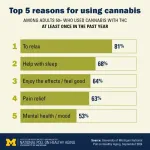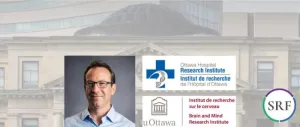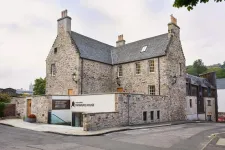(Press-News.org) A QB3-led team uniting researchers from the University of California campuses at Berkeley, San Francisco, and Santa Cruz was awarded a $12 million grant from the California Institute for Regenerative Medicine (CIRM) to investigate the origins of autism using sophisticated cellular models called “neural organoids.”
This grant is the first funding brought in by QB3’s Collaborative Research initiative, which was recently created to address major challenges in human health by leveraging research talent and resources across the UC campuses served by QB3.
"We are grateful for the support provided by the CIRM team to craft a highly successful application and for recognizing the potential of our proposed work,” said David Schaffer, PhD, QB3’s executive director and a UC Berkeley professor of chemical and biomolecular engineering. “QB3 has long supported entrepreneurship across the UC system, and QB3-affiliated scientists generate impressive results. But we realized that a centralized group coordinating research talent from diverse fields could achieve much more than the individual labs could by themselves. We look forward to many more such projects in the future.”
The $12 million grant was awarded through CIRM’s ReMIND-L (DISC 4) program, a new initiative designed to accelerate the discovery of mechanisms underlying neuropsychiatric disorders leading to the identification and validation of novel targets and biomarkers. The goal is to provide new avenues and rigorous foundations for future translational and clinical investigations. To achieve this, the ReMIND Program will catalyze innovative, cross-disciplinary collaborations and support broad knowledge-sharing among research scientists and other stakeholders. ReMIND-L grants support expansive cross-disciplinary studies led by large collaborative teams applying a range of technologies and approaches.
“This project exemplifies CIRM’s commitment to supporting groundbreaking research into neuropsychiatric conditions,” said Lise Barbé, QB3 grants coordinator. “Autism affects a huge swath of the population across all demographics, and genetic background appears to modulate penetrance of the disease. Society needs new technologies to study the condition accurately in the lab, build a decision tree doctors can use to diagnose patients early, and precision medicine that can be tuned based on genetic background.”
“This project is particularly important because it addresses a critical bottleneck in ASD research,” said Rosa Canet-Avilés, PhD, VP of Scientific Programs and Education at CIRM. “By uncovering the genetic underpinnings of ASD and developing new diagnostic tools, this research has the potential to lead to more precise and effective interventions. It brings hope to families affected by ASD and exemplifies the power of collaboration between institutions to tackle complex medical challenges.”
The team will employ neural organoids – complex assemblies of neurons and other cell types – to identify clinically-relevant disease phenotypes in a petri dish. Researchers can then use these phenotypes to build a target list of disease-modifying genes, and begin to develop gene therapies.
“The strength of our collaborative research initiative is to bring together a diverse team,” Barbé said, “including molecular biologists, bioengineers, clinicians, computational biologists, geneticists, and individuals with previous expertise in clinical translation. All of whom have relevant expertise, but not quite all the expertise to pull off all aspects of the project, let alone at the scale we will perform the work, with dozens of patients, cell lines and hundreds of human brain samples.
Alex Pollen, PhD, an associate professor of neurology at UC San Francisco, is the principal investigator of the research team. “Together, our team combines clinical data, 3D brain organoid models, analysis of genetic risk factors, genome engineering screens, and advanced AI tools to find common pathways, protective factors, and biomarkers for different forms of autism,” he said. “We have a multidisciplinary team that includes a practicing child neurologist, Dr. Elliott Sherr, who will add clinical expertise to the project.” Sherr is a UCSF professor of neurology and pediatrics.
The team is an integrated effort across the UC campuses at Berkeley, San Francisco, and Santa Cruz.
At UCSF, Pollen and Martin Kampmann, PhD, a professor of biochemistry and biophysics, will embrace the complexity of autism phenotypes and harness their heterogeneity to identify novel therapeutic targets and biomarkers using human brain samples from diverse genetic backgrounds. They will determine gene expression through sequencing and turn off genes that potentially modify severity of the disease in a given genetic background. Saul Kato, PhD, a UCSF associate professor of neurology, will increase the clinical diagnosis and therapeutic testing availability by applying integrative machine learning assays on all clinical, human brain, and neural organoid data to build an autism classification system.
At UC Santa Cruz, the “Braingeneers” team (Sofie Salama, PhD, acting professor of molecular, cellular and developmental biology; Mircea Teodorescu, PhD, associate professor of computer engineering; Mohammed Mostajo-Radji, PhD, assistant research scientist; and David Haussler, PhD, distinguished professor of biomolecular engineering), will identify autism disease phenotypes in neural organoids grown from autism patient samples, together with Helen Bateup, PhD, a UC Berkeley professor of molecular and cell biology. With Sherr’s clinical expertise, this group will assign clinical relevance to the disease phenotypes using patients' MRI and clinical data.
Lastly, Schaffer’s lab at UC Berkeley will target the genetic modifiers and specific neuronal subtypes identified at UCSF with modified adeno-associated viruses (AAVs). Schaffer has co-founded nine companies, several of which employ AAVs to deliver therapies that are in clinical trials.
Schaffer’s experience with spinning off advanced technology underscores the likelihood that discoveries made by this CIRM-funded research team will be commercialized and ultimately reach patients. In addition to licensing through the tech transfer offices on the UC campuses, QB3, which Schaffer leads, has a long track record of supporting entrepreneurs with programs, incubator space, and investment to de-risk new technologies and make them attractive for acquisition by larger companies.
Through QB3’s Collaborative Research initiative, the team is pursuing several other grant opportunities addressing challenges in Alzheimer’s, stroke, aging and drug discovery platforms. “While QB3’s priority is to support research at UC campuses,” Barbé said, “we recognize that the complex nature of this work requires the highest degree of specialization. We welcome working with scientists from industry and universities beyond UC if the skills and resources they bring are of extraordinary value to the project.”
For more information on QB3 Collaborative Research, and to join future collaborative grant opportunities, contact lisebarbe@berkeley.edu.
About QB3
QB3 supports research, innovation, and entrepreneurship to address challenges in human and planetary health – climate change – on and across University of California campuses at Berkeley, San Francisco, and Santa Cruz.
QB3 operates startup incubators in a public-private partnership to help entrepreneurial scientists translate advances in research into scalable solutions for better health, a sustainable environment, and a dynamic economy. Through lab space and programs, QB3 accelerates development of new technologies for the public good, provides training opportunities and jobs for UC students, and boosts the economic development of our universities and California communities.
Major spinoff initiatives from QB3 include the Rosenman Institute in health technology, the MBC Biolabs incubator network, and the venture capital firms Mission Bay Capital and MedTech Venture Partners. To date more than 300 companies supported by QB3 have created more than 17,000 jobs and raised more than $13 billion in capital. Visit qb3.org
About the California Institute for Regenerative Medicine (CIRM)
At CIRM, we never forget that we were created by the people of California to accelerate stem cell treatments to patients with unmet medical needs, and act with a sense of urgency to succeed in that mission. To meet this challenge, our team of highly trained and experienced professionals actively partners with both academia and industry in a hands-on, entrepreneurial environment to fast track the development of today’s most promising stem cell technologies.
With $5.5 billion in funding and more than 150 active stem cell programs in our portfolio, CIRM is one of the world’s largest institutions dedicated to helping people by bringing the future of cellular medicine closer to reality.
END
Collaborative three-campus QB3 research team awarded $12 million CIRM grant to study origins of autism in diverse population
Using "organoids” derived from a diverse set of brain samples, scientists will classify autism types, identify responsible genes, and target with precision therapy
2024-09-12
ELSE PRESS RELEASES FROM THIS DATE:
Cannabis and older adults: Poll shows current use patterns, beliefs and risks
2024-09-12
Whether they’re using it for recreational or medical reasons, a sizable percentage of people in their 50s and older have smoked, eaten, drunk or applied to their skin at least one form of cannabis in the past year, a new poll shows.
In all, 21% of people age 50 and older said they used a form of cannabis that contains the psychoactive compound THC at least once in the past year, according to new findings from the University of Michigan National Poll on Healthy Aging. The poll report focuses on use of cannabis ...
Dr. Baptiste Lacoste, of the Ottawa Hospital Research Institute and uOttawa Brain and Mind Research Institute, receives a SynGAP Research Fund (SRF) Grant for Groundbreaking Research on Vascular and M
2024-09-12
Mill Valley, CA – September 12, 2024 – The SynGAP Research Fund 501(c)(3) announces a $128,888 grant to Dr. Baptiste Lacoste at the uOttawa Brain and Mind Research Institute (uOBMRI) and Ottawa Hospital Research Institute (OHRI). This grant supports Dr. Lacoste's pioneering research project aimed at exploring the role of vascular and metabolic dysfunction in SYNGAP1-Related Non-Syndromic Intellectual Disability (SYNGAP1-NSID), also known as SYNGAP1-Related Disorders (SRD).
With elevated energy demands and a limited capacity to store ...
$75,000 prize inspired by 18th century Scots economist attracts global entries
2024-09-12
A Scottish $75,000 prize for “radical innovation” has shortlisted four academics from around the world.
Named after Panmure House, the former Edinburgh home of 18th century Scots economist and philosopher Adam Smith, the Panmure House Prize rewards groundbreaking research that contributes to advancing long-term thinking and innovation.
After a record number of entries for the 2024 prize, its fourth year, the judges have drawn up a shortlist of four submissions from the United States, Spain ...
SOPHiA GENETICS announces poster presentations at ESMO 2024
2024-09-12
Boston, MA and Rolle, Switzerland, September 12, 2024 – SOPHiA GENETICS (Nasdaq: SOPH), a cloud-native healthcare technology company and a global leader in data-driven medicine, will be presenting multiple posters at the European Society for Medical Oncology (ESMO) Congress 2024 being held in Barcelona, Spain September 13-17, 2024. The ESMO Congress is a globally influential oncology platform for clinicians, researchers, patient advocates, journalists and healthcare industry representatives from all over the world.
The details of the presentations are as follows:
Title: ...
New fossil fish species scales up evidence of Earth’s evolutionary march
2024-09-12
Access VIDEO, photos and captions here
Climate change and asteroids are linked with animal origin and extinction – and plate tectonics also seems to play a key evolutionary role, ‘groundbreaking’ new fossil research reveals.
The discovery of an exceptionally well preserved ancient primitive Devonian coelacanth fish in remote Western Australia has been linked to a period of heightened tectonic activity, or movement in the Earth’s crust, according ...
Personal carbon footprint of the rich is vastly underestimated by rich and poor alike, study finds
2024-09-12
The personal carbon footprint of the richest people in society is grossly underestimated, both by the rich themselves and by those on middle and lower incomes, no matter which country they come from. At the same time, both the rich and the poor drastically overestimate the carbon footprint of the poorest people.
An international group of researchers, led by the Copenhagen Business School, the University of Basel and the University of Cambridge, surveyed 4,000 people from Denmark, India, Nigeria and the United States about inequality in personal carbon footprints – the total amount of greenhouse gases ...
Tumor-induced B cell changes reveal potential biomarker for treatment response in triple negative breast cancer
2024-09-12
HOUSTON – (Sept. 12, 2024) – Researchers at Baylor College of Medicine and collaborating institutions have discovered new insights into tumor-induced B cell changes in blood and bone marrow of triple negative breast cancer patients. The findings, published in Nature Cell Biology, show two distinct patterns of B cell abnormalities that could serve as blood biomarkers for determining likelihood of response to standard-of-care chemotherapy and immunotherapy.
“Even with significant advances in immunotherapy, ...
Ehrapy: A new open-source tool for analyzing complex health data
2024-09-12
Ehrapy is intended to fill a critical gap in the analysis of health data, says Lukas Heumos, one of the main developers and a scientist at the Institute of Computational Biology at Helmholtz Munich and the Technical University of Munich (TUM): “Until now, there have been no standardized tools for systematically and efficiently analyzing diverse and complex medical data. We’ve changed that with ehrapy.” The team behind ehrapy comes from biomedical research and has extensive experience in analyzing complex scientific datasets. “The healthcare sector faces similar challenges in data analysis as ...
Ozone pollution reduces tropical forest growth
2024-09-12
Ozone gas is reducing the growth of tropical forests – leaving an estimated 290 million tonnes of carbon uncaptured each year, new research shows.
The ozone layer in the stratosphere shields our planet from harmful ultraviolet radiation – and protecting it is one of the major successes of environmental action.
But ozone at ground level – formed by the combination of pollutants from human activities in the presence of sunlight – interferes with plants’ ability to absorb carbon dioxide. Ozone is also harmful to human health.
The new study, published in ...
Study finds doctors and patients interested in environmental impact of health care decisions
2024-09-12
BOSTON – Concerns about the environmental impact of healthcare decisions rarely enter into conversations between patients and physicians. However, evidence from a new study led by researchers at Dana-Farber Cancer Institute, shows there's broad interest in changing that.
In a series of focus groups conducted in different areas of the United States, doctors and patients expressed openness to considering environmental factors when discussing treatment options. The findings, presented in a paper published online today by Nature Climate Change, suggest that educating physicians about the environmental costs of treatment ...
LAST 30 PRESS RELEASES:
Injectable breast ‘implant’ offers alternative to traditional surgeries
Neuroscientists devise formulas to measure multilingualism
New prostate cancer trial seeks to reduce toxicity without sacrificing efficacy
Geometry shapes life
A CRISPR screen reveals many previously unrecognized genes required for brain development and a new neurodevelopmental disorder
Hot flush treatment has anti-breast cancer activity, study finds
Securing AI systems against growing cybersecurity threats
Longest observation of an active solar region
Why nail-biting, procrastination and other self-sabotaging behaviors are rooted in survival instincts
Regional variations in mechanical properties of porcine leptomeninges
Artificial empathy in therapy and healthcare: advancements in interpersonal interaction technologies
Why some brains switch gears more efficiently than others
UVA’s Jundong Li wins ICDM’S 2025 Tao Li Award for data mining, machine learning
UVA’s low-power, high-performance computer power player Mircea Stan earns National Academy of Inventors fellowship
Not playing by the rules: USU researcher explores filamentous algae dynamics in rivers
Do our body clocks influence our risk of dementia?
Anthropologists offer new evidence of bipedalism in long-debated fossil discovery
Safer receipt paper from wood
Dosage-sensitive genes suggest no whole-genome duplications in ancestral angiosperm
First ancient human herpesvirus genomes document their deep history with humans
Why Some Bacteria Survive Antibiotics and How to Stop Them - New study reveals that bacteria can survive antibiotic treatment through two fundamentally different “shutdown modes”
UCLA study links scar healing to dangerous placenta condition
CHANGE-seq-BE finds off-target changes in the genome from base editors
The Journal of Nuclear Medicine Ahead-of-Print Tip Sheet: January 2, 2026
Delayed or absent first dose of measles, mumps, and rubella vaccination
Trends in US preterm birth rates by household income and race and ethnicity
Study identifies potential biomarker linked to progression and brain inflammation in multiple sclerosis
Many mothers in Norway do not show up for postnatal check-ups
Researchers want to find out why quick clay is so unstable
Superradiant spins show teamwork at the quantum scale
[Press-News.org] Collaborative three-campus QB3 research team awarded $12 million CIRM grant to study origins of autism in diverse populationUsing "organoids” derived from a diverse set of brain samples, scientists will classify autism types, identify responsible genes, and target with precision therapy






